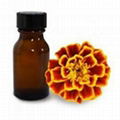| Model: | NH19 |
|---|---|
| Brand: | Nature Herbs |
| Origin: | Made In India |
| Category: | Agriculture & Foods / Gardening / Plant Seeds |
| Label: | Botanical Extracts , Herb Seeds , Essential Oils |
| Price: |
-
|
| Min. Order: | 25 kg |
| Last Online:28 Feb, 2015 |
Kalmegh is a bitter annual (perennial, if maintained) herb, erect, 50 cm to 1m. in height, stem quadrangular, much branched; leaves opposite, short petioled; flowers in racemes. Fruit capsule linear, oblong or elliptic; seeds about 12 in number, sub- quadrate, brownish or creamy yellow.
SOIL
It can be cultivated on wide range of soils from loam to lateritic soils with moderate fertility. It can be cultivated on shady wastelands also.
CLIMATE
The climatic requirement of the plant is hot and humid conditions with ample sunshine. With the onset of monsoon, plant grows luxuriantly and starts flowering with the moderation in temperature during September. Flowering and fruiting continues upto December until temperature drops drastically in Northern plains.
PLANTING
Its propagation is through shattered seeds in nature. Vegetative propagation is also possible in certain special cases through layering as each node is capable of producing enough roots. Seeds are small and remain dormant for five to six months. For raising crop in one hectare three beds of 10x2 m size should be tilled, pulverized and levelled during the month of May. Liberal use of organic manure in nursery is advised for raising healthy seedling. Seeds should be covered by very thin layer of soil and compost mixture. Beds should be covered properly by suitable mulch and irrigated regularly with water fountain till seedlings merge (6-7 days).
Immediately after germination, mulch is removed to avoid elongation of the seedlings. After 10-15 days regular flood irrigation can be given till it becomes ready for planting.
Transplanting of seedling is done in second fortnight of June at a row and plant spacing of 45 to 60 cm and 30 to 45 cm respectively. Beds should be irrigated immediately after planting.
THINNING AND WEEDING
To begin with one or two weeding/hoeing are essential to get the crop established. After establishment, crop grows well during monsoon and does not face any competition from weed.
MANURING
The medicinal plants have to be grown without chemical fertilizers and use of pesticides. Organic manures like, Farm Yard Manure (FYM), Vermi-Compost, Green Manure etc. may be used as per requirement of the species. To prevent diseases, bio-pesticides could be prepared (either single or mixture) from Neem (kernel, seeds & leaves), Chitrakmool, Dhatura, Cow's urine etc.
IRRIGATION
Fairly distributed rainfall during monsoon is sufficient to raise annual crop in Northern states. But prior to rain 2-3 irrigations are required. Irrigation during autumn does not show much effect on biomass yield as by that time plant is in reproductive phase.
HARVESTING
Maximum herb biomass can be obtained in 90-100 days beyond which leaves start shedding. If crop is raised as annual crop and planted during the month of May June, it should be harvested by the end of the September when flowering is initiated. At the time of flower initiation, active principle andrographolide is high in leaves. Since the whole plant contains active principles, entire harvested material is dried in shade and powdered.
YIELD
A well-maintained crop grown during monsoon season yields 3.5 to 4.0 tons of dried herb per hectare.
PART USED : Whole plant











